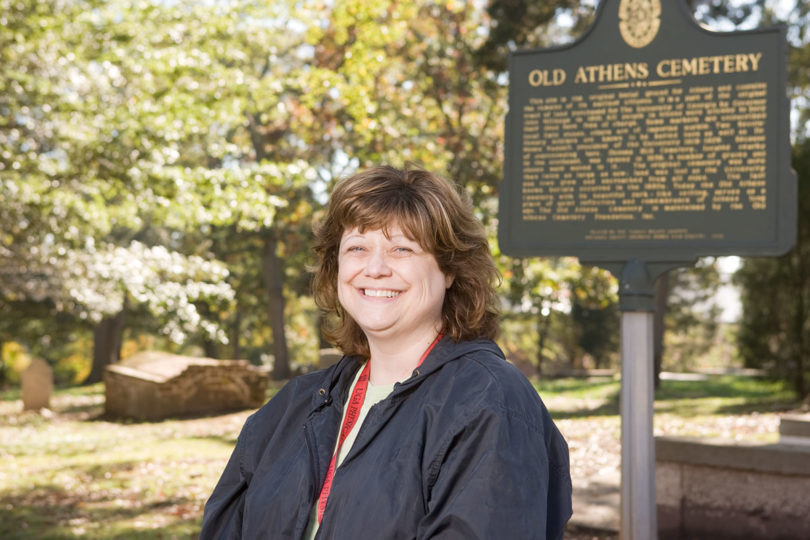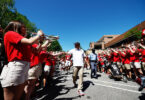UGA’s Jackson Street Cemetery was added to the National Register of Historic Places Oct. 2.
The cemetery, also known as the Old Athens Cemetery, is located on North Campus between the Visual Arts Building and Baldwin Hall and has approximately 800 burials on around 2½ acres of property. The cemetery contains four obelisks, a brick burial vault, a variety of headstones and an undetermined number of unmarked graves.
For the past three years, the cemetery has been part of a preservation project headed by Janine Duncan, a campus planning coordinator in the grounds department.
“Getting this honorary designation reinforces the importance of the site on a broader level,” said Duncan, who started the project as a graduate student.
The cemetery has been cleaned up and repaired. Vegetation has been cleared away, 15 grave markers have been repaired and cemetery monuments, fences and plot walls have received structural repairs. Duncan has worked with preservation experts, including the Chicora Foundation in South Carolina, on more specialized repairs. A historic mason has worked on cemetery repairs and taught UGA masons about specialized mortar repairs.
The cemetery, which was part of the university’s original 633-acre land grant, was used primarily between 1810 and 1856, and when it was full Oconee Hill Cemetery (located behind Sanford Stadium) opened.
Merchants, tailors, ministers, children of UGA faculty members, Revolutionary and Civil War veterans are buried in the cemetery. Two UGA presidents, Robert Finley, who served in 1817, and Moses Waddel, who served from 1819-1829, also are buried in the cemetery. Arabella Hardeman, daughter of state politician Stephen Harris, is buried in the cemetery as is Anne McDonald, wife of state politician Charles McDonald who served as Georgia Governor from 1839-1843.
Duncan, along with the anthropology faculty and students, is using Geographic Information Systems and Ground Penetrating Radar to identify unmarked graves in the cemetery. That process is expected to last an additional four years. Many of the original headstones have fallen over, and Duncan said she’s just waiting to find and unearth them.
“The recognition is a great gesture in noting the significance of the cemetery,” said Dexter Adams, director of the grounds department. “Our research and investigation into conditions at the cemetery have confirmed that there are many, many more burials there than are represented by the surviving markers and monuments. The National Register listing is at least a noteworthy and honorable means of recognizing those otherwise anonymous individuals.”
Paperwork for the designation was started two years ago. She sent the paperwork to the state preservation office, which approved the paperwork, voted on it then sent it to Washington D.C., for the national register staff to approve and then vote on the designation.
“Cemeteries are some of the hardest sites to get on the register,” said Duncan, “because you have to prove the historic integrity is still there.”
So Duncan had to show that the majority of the grave markers, monuments and ironwork still exist. She also had to cite exactly why the cemetery is so culturally and historically important.
She researched the history of the cemetery, from ownership of the cemetery, to the wall on the Visual Arts side accidently being built over unmarked graves in 1962 to the North Campus Parking Deck almost being built in the space.
“Cemeteries are hallowed spaces,” she said. “They are also artistic spaces. The designs in the headstones and monuments speak to the period in which they are created.”
Seven other campus facilities have previously been added to the registry. The Bishop House, the Founders Memorial Garden, the Lucy Cobb Institute, the Lumpkin House, Old North Campus and the President’s House were all added in 1972 and the Athens Factory (now the Interim Medical Partnership Building) was added in 1980.
The register is done through the U.S. Department of the Interior.







